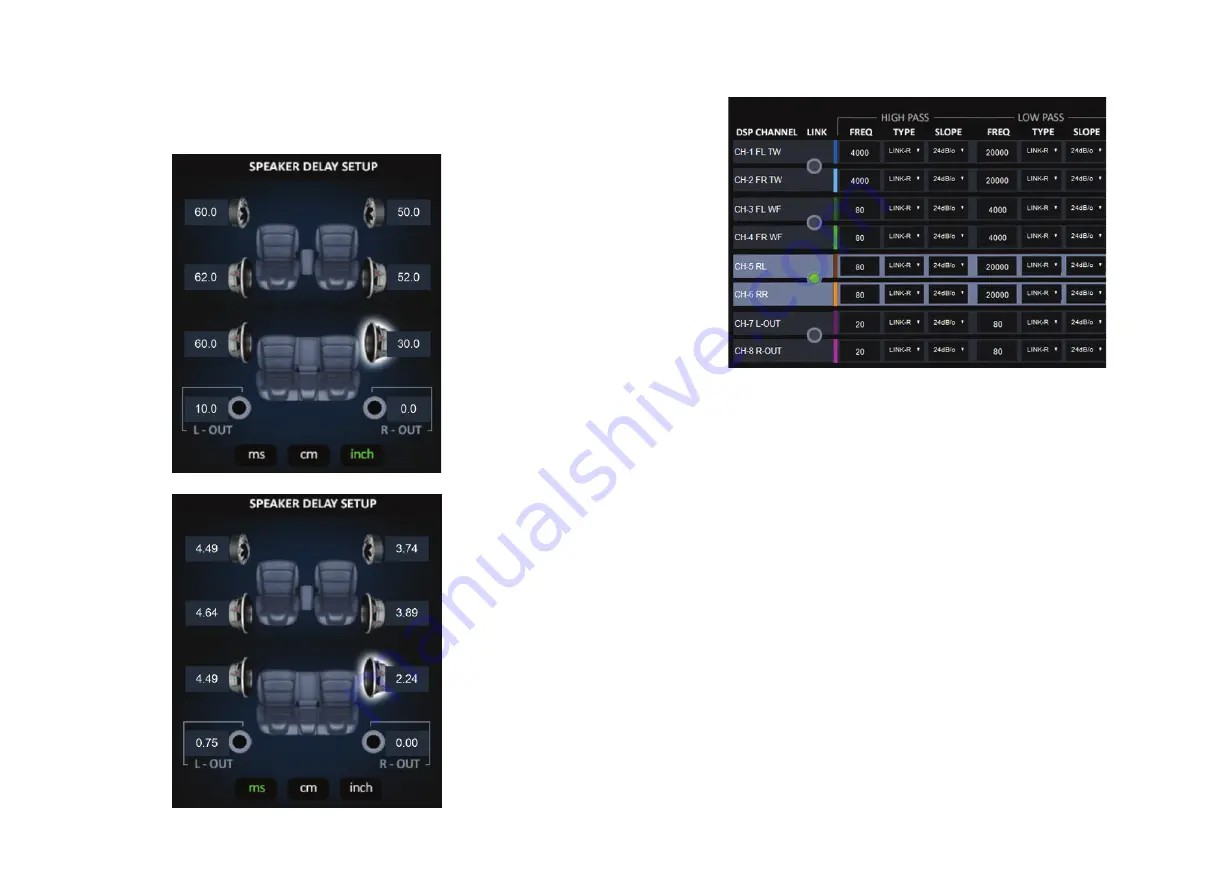
19
The next section holds the
Channel Selection
and
Crossover
.
You can select a channel to tune by clicking on the desired speaker in the car
diagram/Delay section or by clicking on its box in the DSP Channel column. You can pick
channels on at a time or you can pick them by pair. Double clicking the dot between a
pair of channels links that pair. Similarly, if one channel is already chosen and active, then
clicking on the dot will pair them.
This is important as you should always set crossovers by channel pair so the left and right
speakers will be the same. It is also easiest to do initial equalization by channel pair.
Each channel has a High Pass and a Low Pass filter. You can control the frequencies of the
filters by highlighting the FREQ box and typing in a value or by using the keyboard
up/down arrows. You can choose the Shape of the crossover from Butterworth, Linkwitz-
Riley, or Bessel and the Slope using the drop-down menus. The default crossovers are all
24dB/Octave Linkwitz-Riley.
The best source for information on the proper crossovers for your own speakers is the
speaker maker. He can tell you what crossover to use and also how much power the
speakers can handle at different slopes and frequencies.
18
In this example, the longer speaker distance is 70” so we subtract each of the other
speakers from 70 and enter the results in the Delay chart.
After you have entered the distances in
cm
or
inch
you can click
ms
to see the delay in
milliseconds.















